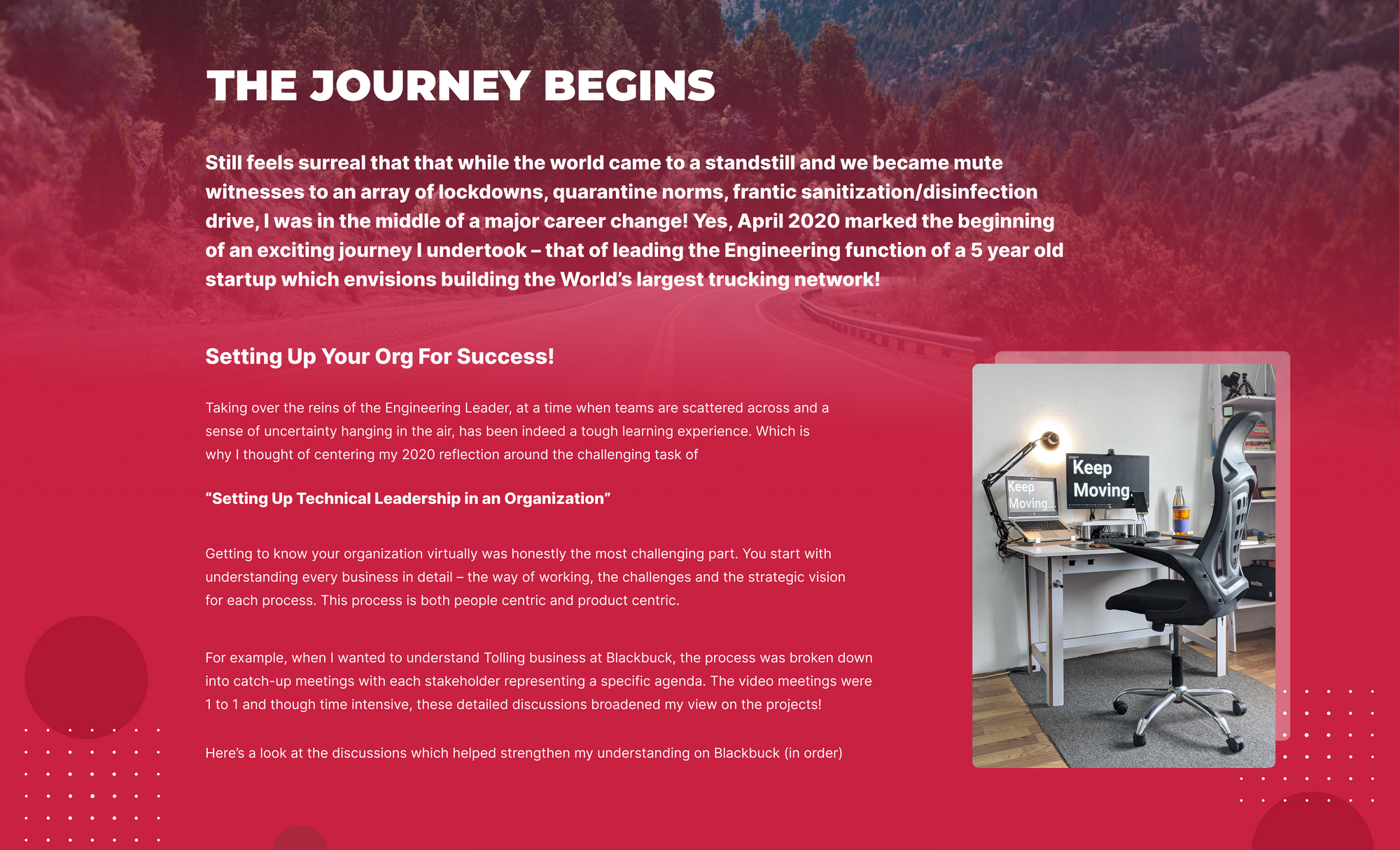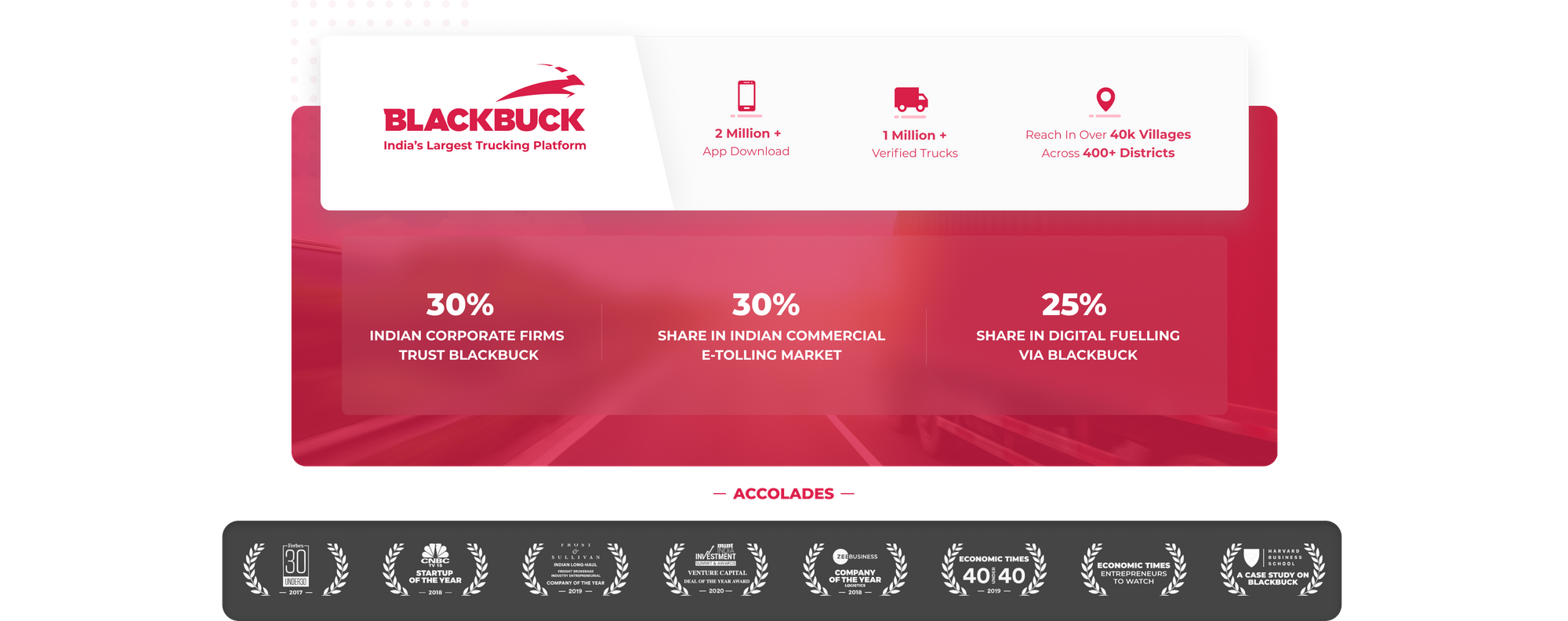Yet another new year is on us and finally, thought the time is ripe to sit down and reflect on my journey in 2020 (maybe the timing seems a little clichéd but as they say, “once in a while, look back so that the view looking forward gets even clearer!).


A) GETTING STARTED – The People & The Product!
Engage with Business & Product Leads
Engaging with the Business Lead involves a precision eye of every aspect of the business processes including short term and long term objectives. As Tech leader, discussions with the Product Lead are of prime importance. You gain a perspective on the product goals for each business process.
By gaining knowledge on the product positioning, purpose and projected performance metrics, you, as a leader, can adopt an engineering strategy that helps achieve the organisational vision for success.
Meeting the Engineering leads
Meeting the engineering leaders focused purely on the technical aspects of different services, that shaped up various business processes. Gaining a deep understanding on the team methodologies in day-to-day execution of strategies is fundamental to the product building phase. That’s exactly how it went!
B) DWELLING INTO THE “HOW”– Intrinsic play of People & Process!
Once you have addressed the ‘what’ part of business, you are equipped to look at the ‘how’ part of organisational development. It is important to understand that every company would have had its own evolution which results in a unique organisation structure. Your personal experience can often create a bias and drive you to focus on what you believe is right. It is absolutely vital to understand the historical legacy of each organisation’s evolution. Understanding the legacy of your organisation can give you enough direction to take the right call. As we explore in the later sections, this is an intrinsic play of Process & People in action!

Weekly Execution review meetings are needed where any cross dependencies and changes are called out and addressed. At BlackBuck, we use this forum to discuss team capacity and understand the need to align or modify any existing targets for the initiative.
Tech Reviews
Weekly tech reviews are a mandatory and critical exercise for maintaining the health of a system. It helps us to go through critical API and infrastructure metrics of each of our services and any service level agreement breaches. Each team takes a goal for optimising and improving the laggard APIs. This is a great place to critically analyse the health of ‘alerts and monitoring’ of the systems. Documenting metrics around an organised review, helps define goals in a structured way. Documenting these metrics have to be automated and consistent across teams.
RCA reviews
RCA reviews go a long way in maintaining uptime of our systems and maintaining the stability of our business. Looking at the ‘five whys’ of the root cause in detail and addressing any modifications and making sure learnings area adopted across systems are the primary agenda of this meeting. Over time, the duration of the meeting will come down owing to a lesser number of issues which crop up (and that’s not a bad thing!!)
C) SPEAKING A COMMON LANGUAGE! – Setting Right Process
Each organisation has its own unique way of working and collaborating across multiple cross functional teams. At BlackBuck, we use the OKR (Objective & Key Results) model which helps use percolate the organisational objective to the last team-member on the ground and ensure the focus remains on the end goal! Hence, the planning cycles for the quarter are an important exercise.

This is a good time for the engineering functions to define clear technical goals for the quarter. One such exercise which worked for me is around the tech platform goals.
Team Growth Analysis
As the team grows and multiple business lines are created for faster execution. We often tend to create multiple identical micro services across multiple product needs.
As the businesses grow, these add “tech debts” to the system and gradually slow things down. The rapid expansion, if unchecked, causes an increased overhead on maintenance. A leader should step in and analyse every step of team growth across various functions.
Taking platform goals every quarter aid in reducing these debts over time. An effective strategy is to incorporate a centralised platform.
A Hybrid Team approach
At Blackbuck, we follow a hybrid approach. Two new platform teams were formed - Data platforms & Infrastructure engineering. Data platform team takes care of goals on technology platforms around data like Data lake, Data Science, Data Analysis, etc. Infra engineering focuses on goals for Infrastructure like CI/CD, Path to Production, Facilities Management, etc. The rest of the engineering teams also take platform initiatives pertaining to the business goals. This helps distribute varied technical learning across teams and individuals.

THE JOURNEY CONTINUES
To sum up, there’s definitely no one method defined for a technical leader as she/he takes control for their team. What I have realised is that it is about learning, continuously and adapting to the changing ecosystems around you!
A mature technical organisation is one which caters to the cumulative technical learning, creating enough avenues for everyone to express themselves while delivering business goals. Ensure that one does not lose sight of the individuals in the team as we focus on the end goal.
The business goals should be well-defined and in conjunction with individual effort towards the journey of a company’s growth. In the virtual mode, all of this needs to be planned and put as part of the individual’s calendar, since hallway conversations are not an increased possibility. The goals can vary depending on the technical level and competency of each team and individual.
Reflecting on the last 8 months of this journey, I can say at BlackBuck, that we got better at being more punctual, clearer in our communication and more aware of our individual needs. Without compromising on the uniqueness of each professional, we have made space for achieving great milestones together. As teams have gently eased into remote working arrangements, complete “attendance” in office is not going to be as necessary. On a final note, organisations may explore hybrid approaches for they really work. If the hybrid work ethic doesn’t support a business goal, well, the decision can be parked for better predictable times.
